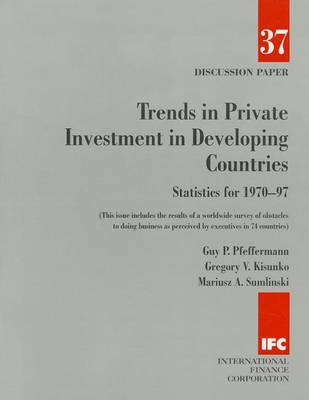Discussion Paper
3 primary works
Book 41
'For the 47 countries covered, 1997 was a record year for private investment, while public investment declined to its lowest level since 1975.' This is the tenth annual edition of 'Trends in Private Investment in Developing Countries'. It pulls together information provided by national organizations, World Bank and IMF economists in order to estimate levels of private investment. For the first time, China has been included in this series. The first part of this volume documents trends in private and public fixed investment. The second part presents country-specific results of a 1996/97 worldwide survey of business executives. The discussion focuses on obstacles to doing business in each of the 74 countries covered (including industrial economies) and their relationship to levels of private investment. A few factors emerge as being of particular importance to private investment decisions: the real exchange rate, the rule of law, predictability of judiciary systems, and the extent to which financing is available to enterprises.
Book 42
Using India as an example, this paper evaluates the potential benefits that the information technology industry, specifically the Internet, hopes to bring to businesses in developing countries. It concludes that although, in terms of numbers of connections and overall use, Internet development in India is still in the early stages, it offers considerable promise for increased productivity and economic growth.
Book 44
This twelfth annual edition of 'Trends in Private Investment in Developing Countries' provides annual data on private and public investment for 63 developing countries. This edition further investigates the relationship between public and private investment. This year's focus is on the quality of public investment, its interaction with corruption, and the resulting effect on private investment.


